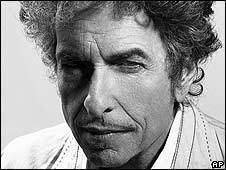By EV World
Did Nikola Tesla really run a touring sedan on free energy?
"In the summer of 1931, Nikola Tesla, the inventor of alternating current and the holder of some 1200 other U.S. patents, along with his nephew Peter Savo, installed a box on the front seat of a brand new Pierce-Arrow touring car at the company factory in Buffalo, New York. The box is said to have been 24 inches long, 12 inches wide and 6 inches high. Out of it protruded a 1.8 meter long antenna and two ¼ inch metal rods. Inside the box was reputed to be some dozen vacuum tubes -- 70-L-7 type -- and other electrical parts. Two wire leads ran from the box to a newly-installed 40 inch long, 30 inch diameter AC motor that replaced the gasoline engine.

PHOTO CAPTION: 1931 Pierce-Arrow touring car similar to the one alleged to have been converted by Nikola Tesla and his nephew to run on some unknown form of energy. Tesla is said to have sold his alternating current patents to Westinghouse for $15 million, but by his death in 1943, he was penniless.
As the story goes, Tesla inserted the two metal rods and announced confidently, "We now have power" and then proceeded to drive the car for a week, "often at speeds of up to 90 mph." One account says the motor developed 1,800 rpm and got fairly hot when operating, requiring a cooling fan. The "converter" box is said to have generated enough electrical energy to also power the lights in a home.
The car is said to have ended up on a farm 20 miles outside of Buffalo, "not far from Niagra Falls."
So what was the power source? Some charged "black magic", while others remained naturally skeptical. Tesla is reputed to have removed the box and returned to his New York City laboratory without revealing how he did it, though the suspicion lingers to this day, on the 150th anniversary of his birth in Smiljan, Croatia on July 9/10, 1856, that he had somehow tapped into the earth's magnetic field or perhaps even more exotically, zero point energy or gravitation waves.
We will, of course, probably never know how he powered the car, or even if the event actually took place -- though we know Tesla was an unparalleled genius when it came to understanding electromagnetism and how to apply it for benign and some allege, deadly purposes. Legend has it that he actually invented a death ray of some type and this is why the government, on his death in 1943, is said to have confiscated all his personal papers. Presumably, they didn't want his research falling into the wrong hands… or was it because they didn't want the world to figure out how to propel our vehicles on free energy?
Is the story of the free energy 1931 Pierce-Arrow just another "urban legend"? I have no way of knowing, but it seems a fitting memorial to a mysterious man who transformed the world as we know it, providing millions with electricity and billions in profits for some of world's largest and most powerful multinational corporations.
Happy birthday, NIKOLA.
Thanks to Dave Cutter at Village Energyfor bringing this intriguing story to our attention."









